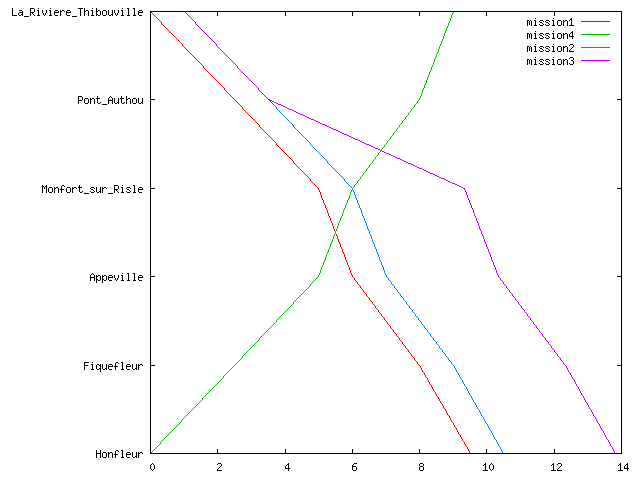 | ||
A service planning diagram is a document designed for railroad traffic safety and control.
In railroad history, it quickly made sense to pipe trains one after the other to the same place, first in large passenger stations, then on links between big railroad hubs. The control was done by the train dispatcher: diagrams were usually drawn once a day, and corrected in real time as the day went by.
The diagram is an overlapping of working timetables. One working timetable (WTT) is created for each train driver. It is much more detailed than a passenger timetable, showing times when the train is idle or moving towards a depot. Remarkable spots called stations are also pinpointed; they are used as waypoints and are not intended for passengers alighting.
In the example on the right end side, four trains (called mission1 to mission4) are sharing the same railroad facilities. You can see that all trains are bound to the same direction, except mission4. Mission4 will meet mission1 and mission2 somewhere between Montfort sur Risle and Appeville about 6 minutes after leaving Honfleur station.
On busy lines, diagrams are now computerized.
